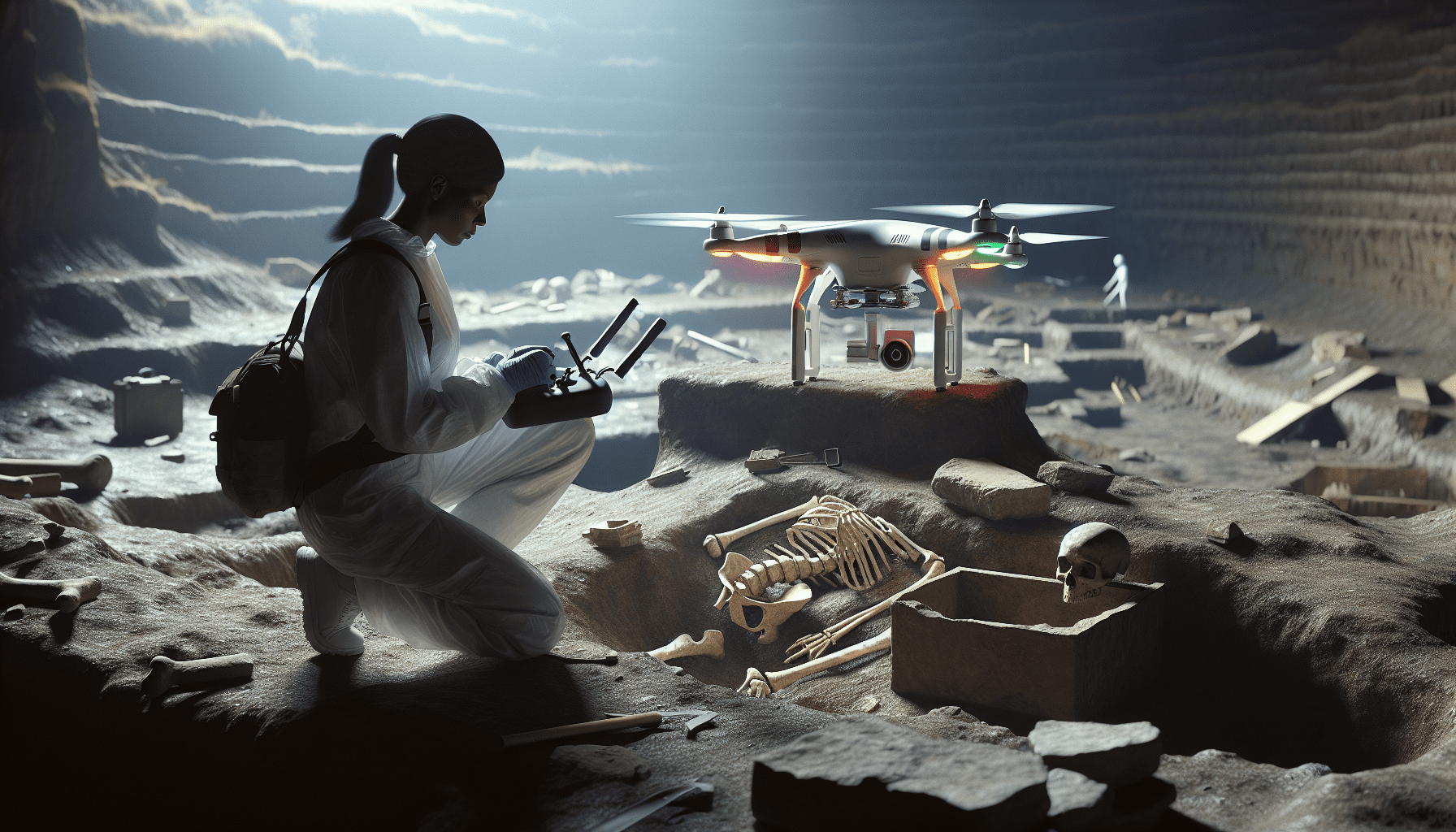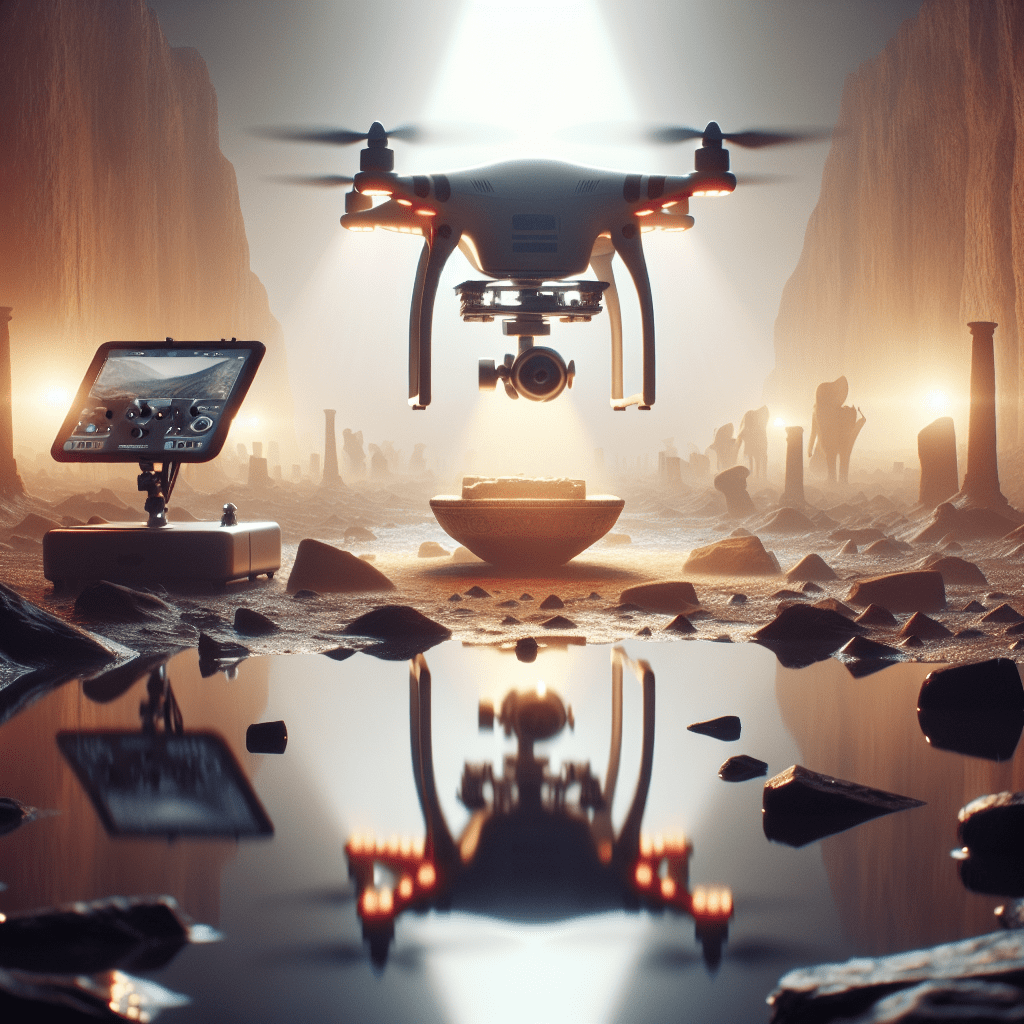The Role of Drones in Archaeological Research
Drones, or unmanned aerial vehicles (UAVs), have become invaluable tools in archaeological studies over the past decade. Their ability to gather high-resolution aerial imagery and conduct thorough landscape analyses has enabled archaeologists to map out sites with unprecedented accuracy. With advanced sensors and imaging technologies, drones can capture detailed data that traditional methods cannot, resulting in a more comprehensive understanding of historical sites. For instance, the use of LiDAR (Light Detection and Ranging) technology allows drones to penetrate dense vegetation, revealing ground surfaces and structures that were previously obscured. This capability is crucial in dense jungle environments, where historians might otherwise struggle to locate and understand ancient ruins.

Advanced Survey Techniques
The use of drones in archaeological survey techniques goes beyond mere mapping. They enable researchers to create 3D models of archaeological sites, facilitating more efficient data analysis and preservation efforts. UAVs can be programmed to fly over specific areas methodically, capturing thousands of images that are later processed into 3D models using sophisticated software. This approach not only preserves the data for future studies but also assists in monitoring ongoing site conditions, helping archaeologists understand how factors like climate change affect these invaluable remnants of human history.
Case Study: The Maya City of Tikal
An excellent case study showcasing the efficacy of drones is the aerial mapping project carried out in Tikal, an ancient Maya city in Guatemala. By employing drones, researchers could map the city’s extensive layout, discovering an intricate network of roads and structures that had previously eluded traditional survey methods. This project brought to light over 60,000 structures, showcasing how drones can significantly enhance our understanding of ancient urban planning and societal organisation.
Significant Discoveries Made Possible by Drones
Many archaeological discoveries have been made possible due to the utilisation of drones, with some findings showcasing lost civilisations and architectural marvels. These discoveries underscore the transformative role of drones in revealing the complexities of human history, often shifting our understanding of ancient societies. One notable instance is the discovery of the ancient city of Nan Madol in Micronesia, which consists of nearly 100 artificial islands linked by canals. Drones provided a new perspective, allowing archaeologists to survey the site from above and uncover details about its layout that were not previously visible from the ground.
“Drones are redefining the possibilities of archaeological research, providing insights that were once unimaginable.”
Uncovering Megafortresses
Another remarkable find facilitated by the use of drones is the identification of a hidden megafortress in the remote mountains of Armenia thought to be over 3,000 years old. Researchers, utilising drone technology, were able to uncover monumental structures, including defensive walls that had been buried under layers of earth and vegetation. This discovery highlighted the existence of complex societies that had previously gone unnoticed, illustrating the capability of drones to reveal lost histories and reshape our understanding of ancient military architecture.
The Impact on Archaeological Methodology
The integration of drones into archaeological methodologies has led to a paradigm shift in how archaeological research is conducted. Traditional excavation and field survey methods were often laborious, time-consuming, and susceptible to missing details due to the limited perspective from the ground. In contrast, drones provide a bird’s-eye view that offers comprehensive site analysis in a fraction of the time. Their integration encourages a more interdisciplinary approach, combining archaeology with advanced technologies like geospatial analysis and remote sensing, leading to richer insights into ancient human activities.
Enhancing Collaboration among Archaeologists
By improving data collection and dissemination, drones foster collaboration among archaeologists globally. Different teams can share aerial maps and models, which can virtually be accessed and analysed by researchers thousands of miles away. This open exchange of information promotes collective investigations and speeds up the process of deducing significant insights about past civilisations. Drones have also made fieldwork safer for archaeologists, particularly in areas with challenging terrain or environmental risks, as researchers can notably reduce their presence on sensitive sites without compromising the integrity of the data.
Challenges and Limitations of Drone Use in Archaeology
<pDespite their numerous advantages, the use of drones in archaeology does come with challenges. One significant challenge is the legal and regulatory framework governing drone usage, which varies from country to country. In some regions, flying drones over archaeological sites may require permits or adherence to specific guidelines, potentially slowing down research progress. Additionally, while drones efficiently gather visual data, they lack the ability to discern the age or significance of archaeological features, necessitating further analysis and interpretation by human experts. Addressing these challenges requires ongoing discussions and collaborations among archaeologists, policymakers, and drone technology developers to establish best practices in drone use.
The Future of Drones in Archaeology
The future of drones in archaeology looks incredibly promising. As technology continues to advance, the capabilities of UAVs are expected to expand, enabling even more sophisticated methods of data collection. For example, drones equipped with thermal imaging sensors can detect anomalies in soil temperature, indicating the presence of buried structures or features that may not be visible to the naked eye. Additionally, the integration of artificial intelligence and machine learning into drone operations may further enhance the ability to analyse and interpret complex datasets, allowing for deeper insights into the archaeological record.
Inspiring the Next Generation of Archaeologists
Furthermore, the use of drones in archaeology inspires educational initiatives aimed at engaging a younger generation in the study of historical sciences. Students and children can participate in drone flying workshops, learning how to collect data and understand its significance within archaeological contexts. Programs that demonstrate the intersection of technology and archaeology provide an interactive platform for aspiring archaeologists, encouraging them to consider how advanced technologies can be applied to uncover our shared history.
The Role of Companies like Memaero
Companies like Memaero are at the forefront of providing drones that enhance explorations of historical sites. With a focus on innovative solutions, they equip researchers with the tools needed to conduct in-depth archaeological surveys, boosting efficiency and accuracy. By promoting cutting-edge drone technology, Memaero aims to transform how professionals in the archaeological field operate, ensuring that valuable historical data can be uncovered, preserved, and appreciated by future generations.
Discover how our drones can enhance your exploration of historical sites with cutting-edge technology. Learn more about our innovative solutions.
Conclusion
Incorporating drones into archaeology has revolutionised the way researchers uncover past civilizations. From revealing lost cities to unearthing ancient megafortresses, drones provide invaluable data that enhance our understanding of historical sites. While challenges remain in the regulatory landscape and technology, the benefits that drones offer far outweigh the limitations. The future of archaeology, with drones at the helm, promises exciting developments and discoveries. As we continue to harness the capabilities of UAVs, researchers will refine their methodologies, leading to a more profound understanding of who we are and where we came from. Furthermore, organisations like Memaero play a vital role in this journey by developing drone technologies that explore historical sites more efficiently. Discover how our drones can enhance your exploration of historical sites with cutting-edge technology. Learn more about our innovative solutions.
Frequently Asked Questions
How are drones used in archaeology?
- Drones are used in archaeology to survey large areas quickly, capture high-resolution images, and create topographical maps, aiding in the discovery and analysis of ancient sites.

